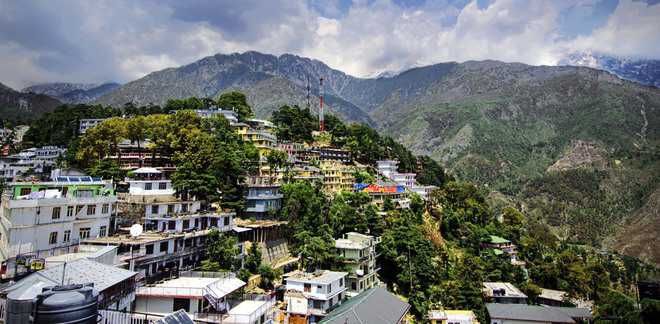The two pillars of McLeodganj
There have been repeated moments across history when people have had to leave their homes as a result of manmade scourge. Here is the result of one such. This, by fate, circumstance and event, has also bestowed an aura of sanctity upon a crowded hill.
Long before McLeodganj (Upper Dharamsala) became a smart city and a trash-maker’s paradise, NN Nowrojee had a shop at the entrance to the bazaar. Even in the late 1990s, the shop lived in a world of its own and its owner, the affable Nauzer Nowrojee, carefully preserved a legacy that went back to the mid-19th century.
Placards of JB Mangaram’s biscuits, cutouts endorsing Vimto, tins of Craven A cigarettes, all belonged to a time long gone. It was at the end of the Anglo-Sikh wars in 1849 that the lands that were to become the twin towns of Dharamsala and McLeodganj were absorbed into British India. When the Great Uprising of 1857 had come to an end, Nowrojee’s ancestors moved up from Punjab to McLeodganj in 1860, with the British army. As the place steadily grew, for close to a century, the establishment of Nowrojee and Son were the primary purveyors of a variety of goods to the residents of the area.
NN Nowrojee belonged to the fifth generation. With the end of the colonial rule in 1947, many of the area’s European residents emigrated and most left the keys of their properties with the man they had grown to trust and like. For a couple of decades, Nowrojee kept watch over the bungalows in his charge and was often called the ‘unofficial custodian of McLeodganj’.
When His Holiness the Dalai Lama was compelled to leave Tibet and came to India, he began searching for a place for himself and his people. Seeing something fall into place, Nowrojee supposedly wrote to the Prime Minister, Pandit Nehru, and suggested that the Dalai Lama take a look at McLeodganj. Soon after he had sent off that fateful missive, three large Landmaster cars drove up to his shop — and this was a time when a solitary vehicle in McLeodganj would have attracted attention. The men in the cars are believed to have gone up to the now rather nervous Nowrojee.
“Did you write a letter to the Prime Minister?” asked one.
“Yes,” replied Nowrojee, as he recounted to me in 1996.
“We are from the government,” said one of the now very-obvious sleuths.
They took a look at McLeodganj and returned to wherever they had come from. Then, the Dalai Lama himself came to inspect the place in 1960 and approved it. His Holiness, thus, became perhaps the most prominent of dignitaries that have made Himachal Pradesh their home.
Next came the issue of security. On July 11, 1963, a comprehensive set of standing orders was prepared by the SP of Kangra. In the normal course of things, a set of these orders was sent to the DIG, CID, of Punjab, as Kangra was still a part of that state.
These standing orders noted that His Holiness had taken up residence at a house known as ‘Swarg Ashram’ and noted: “In view of the widespread sympathy for the Dalai Lama and the present strained Sino-Indian relations, it is necessary that proper security arrangements for the person of the Dalai Lama should be made.”
The basis for these standing orders were the ‘Rules and Instructions for the Protection of the Dalai Lama when in Residence and on Tour’ that had been formulated by the Intelligence Bureau and had been received by the SP, Kangra, in 1960.
A noting by hand on the file observed that rooms to be occupied by His Holiness were to be searched by the Private Secretary or by the Confidential Secretary. All mail and parcels were to pass through the hands of the Security Officer before being handed over to the Private Secretary — who, in turn, was expected to open these before handing them over to His Holiness. A special note was to be made of persons who were granted interviews with His Holiness. Not unexpectedly, the officer was told to be extremely vigilant as once a visitor passed the Enquiry Office, he could move unchallenged right up to the security cordon. An unarmed constable was detailed on duty both day and night by this point.
This section of the file ended with the observation that “it is particularly necessary for the Enquiry Office staff to be polite, courteous and tactful in their dealings with visitors”. It added that they should abstain from entering into an argument that could lead to an embarrassing situation. As ‘Swarg Ashram’ was surrounded on all sides by woods, for safety, an outer cordon was marked on the ground and was divided into four patrolling beats, each with an armed constable.
Today, the issues of security and the world’s political contours are somewhat different. Yet, as the years have gone by, in more ways than one, Himachal and McLeodganj have come to be closely associated with His Holiness the Dalai Lama. The man who was supposedly responsible for bringing him there, Nauzer Nowrojee, passed away on October 24, 2000. The shop has also gone. His Holiness, the second pillar, constantly challenged yet gently firm, unwaveringly wise and compassionate, still stands tall.









